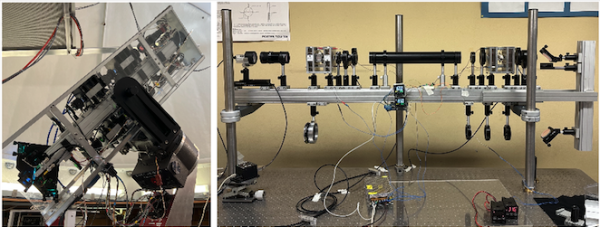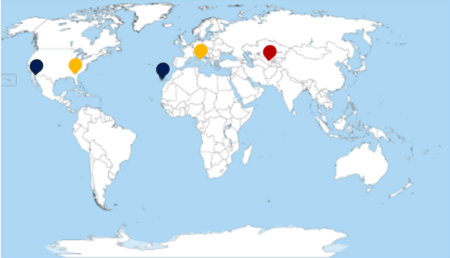Multi-Height Multi-site Synoptic Observations
| Nugget | |
|---|---|
| Number: | 495 |
| 1st Author: | Fallon KONOW |
| 2nd Author: | |
| Published: | May 12, 2025 |
| Next Nugget: | |
| Previous Nugget: | On turbulent magnetic reconnection: fast and slow mean steady-states |
Introduction
We do not have adequate synoptic observations of the Sun at high cadence and high resolution. Such observations, especially if aimed at sampling multiple heights in the solar atmosphere, fill an important link between Sun-as-a-star observations and the stars hosting exoplanets. GATES (the Global Automatic Telescopes for Exploring the Sun) is an international network aiming to fill this gap.
GATES will produce a multi-height, synopticc data-set of the solar atmosphere. It currently consists of two ground-based telescopes: the Mojave Solar Observatory MSO and the Tor Vergata Solar Synoptic Telescope (TSST). These telescopes use magneto-optical filters ((MOFs), and produce full-disk line-of-sight Doppler velocity and magnetic field measurements (Dopplergrams and magnetograms). By the end of 2026, GATES plans to execute a simultaneous observing run with both nodes to show proof-of-concept for a ground-based, multi-nodal, MOF solar observatory.
Observatories
TSST (Rome) is a dual-channel MOF for low-chromospheric and photospheric measurements at the D2 line of Na I (589 nm) and the K 1 line (769.6 nm), the latter with an 80 mm aperture. These instruments will move to the site of the Telescopio Nazionale Galileo (TNG) in La Palma.
MSO is located in Apple Valley, CA, USA and was designed to continue the multi-height MOF observations initiated by the "Magneto Optical filter at Two Heights" (MOTH) South Pole campaigns and to serve as the first operational node of the GATES Network. The telescope observes K I D1 (769.9 nm) and Na I D2 (589.0 nm) via MOF channels to obtain precise full-disk Doppler- and magnetogram. The two channels are mounted on the same telescope which has a 70 mm aperture; the K and Na channels have 802.4 mm and 893.1 mm focal lengths, with cameras having pixel scales for the K and Na channels of 0.89 and 0.80 arcsec/pixel respectively.
The GATES network
Figure 1 shows the existing instrumentation at the two GATES sites.
The network may expand to a third site in Central Asia, as shown in the map (Figure 2).
Conclusions
For further detail see Ref. [1]; for the MOTH observations with MOF instrumentation at the South Pole, Ref. [2].
References
[1] "GATES: a network for synoptic space weather observations"

